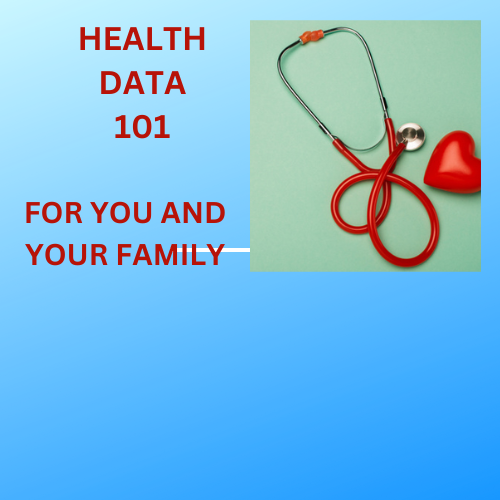Health Data 101- #healthdata101dataSecurityandSafeDataHoldinginHealthcare

#healthdata101dataSecurityandSafeDataHoldinginHealthcare
#healthdata101.com
Data Security and Safe Data Holding in Healthcare
Data security and the safe holding of information are critical in the healthcare industry due to the sensitive nature of patient information and the legal requirements for protecting this data. Ensuring data security involves implementing robust measures to protect against data breaches, unauthorized access, and other cyber threats. Here’s an overview of key aspects related to data security and safe data holding in healthcare:
Key Components of Data Security in Healthcare
-
Confidentiality, Integrity, and Availability (CIA Triad):
- Confidentiality: Ensuring that patient information is accessible only to authorized individuals.
- Integrity: Maintaining the accuracy and completeness of patient data.
- Availability: Ensuring that data is accessible to authorized users when needed.
-
Regulatory Compliance:
- Compliance with laws such as the Health Insurance Portability and Accountability Act (HIPAA) in the United States, the General Data Protection Regulation (GDPR) in Europe, and other regional regulations is essential. These regulations set standards for the protection of health information and mandate specific security measures.
-
Access Control:
- Implementing strict access controls to ensure that only authorized personnel can access sensitive information. This includes using user authentication methods such as passwords, biometrics, and multi-factor authentication (MFA).
-
Data Encryption:
- Encrypting data both at rest and in transit to protect it from unauthorized access. Encryption ensures that even if data is intercepted or accessed illegally, it remains unreadable without the appropriate decryption key.
-
Network Security:
- Using firewalls, intrusion detection/prevention systems (IDS/IPS), and secure network architectures to protect data from cyber threats. Regularly updating and patching systems to address vulnerabilities is also crucial.
-
Regular Audits and Monitoring:
- Conducting regular security audits and continuous monitoring of systems to detect and respond to security incidents promptly. Audits help identify potential vulnerabilities and ensure compliance with security policies.
-
Data Backup and Recovery:
- Implementing robust data backup solutions and disaster recovery plans to ensure data can be restored in case of loss or corruption. Regular backups should be stored securely and tested to ensure they are functional.
-
Physical Security:
- Protecting physical access to servers, data centers, and other critical infrastructure. This includes using security measures such as access badges, surveillance cameras, and secure facilities.
-
Training and Awareness:
- Providing regular training and awareness programs for healthcare staff to ensure they understand data security policies and best practices. Educating employees about phishing attacks, social engineering, and other common threats can help prevent security breaches.
Earn as One country One AGENT.
Contact for details: Email: sappertekinc@gmail.com
Absolutely risk free and FREE for download... App link: https://www.amazon.com/gp/product/B0D514TH5S
https://healthdata101.com
Challenges in Healthcare Data Security
-
Evolving Cyber Threats: The healthcare industry is a prime target for cybercriminals due to the high value of medical data. Threats such as ransomware, phishing, and advanced persistent threats (APTs) are continually evolving.
-
Interoperability and Data Sharing: The need for interoperability and data sharing between different healthcare providers and systems can create security vulnerabilities if not managed properly.
-
Legacy Systems: Many healthcare institutions still use outdated systems and software that may not have the latest security features, making them more susceptible to attacks.
-
Resource Constraints: Some healthcare organizations, especially smaller ones, may have limited resources for implementing comprehensive security measures.
Best Practices for Safe Data Holding
-
Implement a Robust Security Framework: Adopting security frameworks such as the NIST Cybersecurity Framework or ISO/IEC 27001 can provide a structured approach to managing and protecting sensitive data.
-
Regularly Update and Patch Systems: Keeping all software and systems up to date with the latest security patches is crucial to protect against known vulnerabilities.
-
Use Strong Authentication Mechanisms: Implementing multi-factor authentication (MFA) adds an additional layer of security beyond traditional passwords.
-
Encrypt Sensitive Data: Use strong encryption methods for both data at rest and in transit to protect sensitive information from unauthorized access.
-
Develop and Test Incident Response Plans: Having a well-defined incident response plan and conducting regular drills can help healthcare organizations respond effectively to data breaches and other security incidents.
-
Engage in Continuous Monitoring: Utilizing advanced monitoring tools to detect and respond to suspicious activities in real-time helps mitigate potential security threats.
In conclusion, ensuring data security and safe data holding in healthcare requires a comprehensive and proactive approach. By implementing robust security measures, staying compliant with regulations, and fostering a culture of security awareness, healthcare organizations can protect sensitive patient information and maintain the trust of their patients.
Earn as One country One AGENT.
Contact for details: Email: sappertekinc@gmail.com
Absolutely risk free and FREE for download... App link: https://www.amazon.com/gp/product/B0D514TH5S
https://healthdata101.com
- Questions and Answers
- Opinion
- Motivational and Inspiring Story
- Technology
- Live and Let live
- Focus
- Geopolitics
- Military-Arms/Equipment
- Security
- Economy
- Beasts of Nations
- Machine Tools-The “Mother Industry”
- Art
- Causes
- Crafts
- Dance
- Drinks
- Film/Movie
- Fitness
- Food
- Games
- Gardening
- Health
- Home
- Literature
- Music
- Networking
- Other
- Party
- Religion
- Shopping
- Sports
- Theater
- Health and Wellness
- News
- Culture

